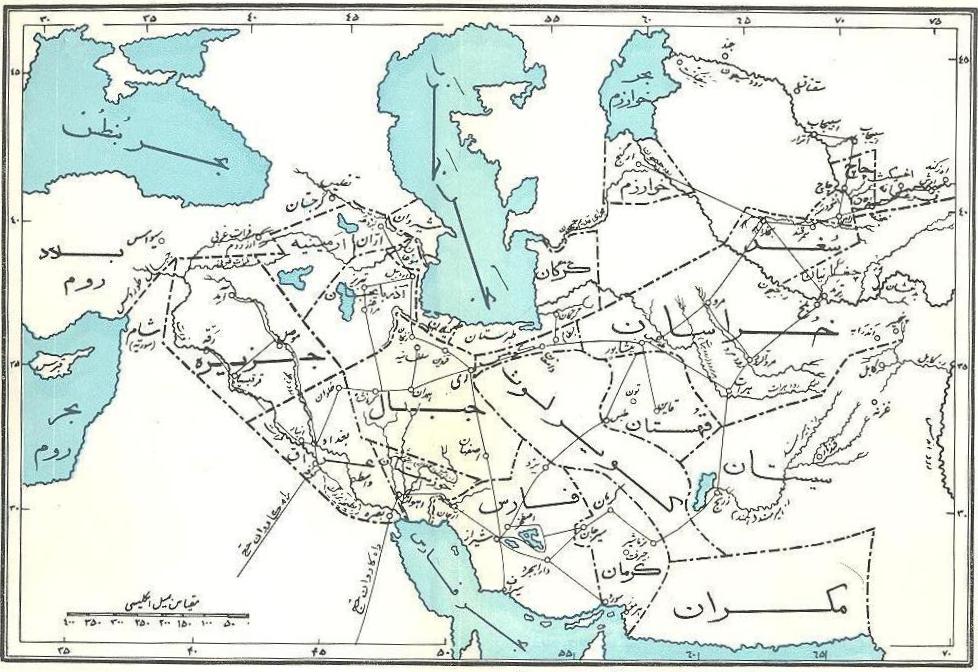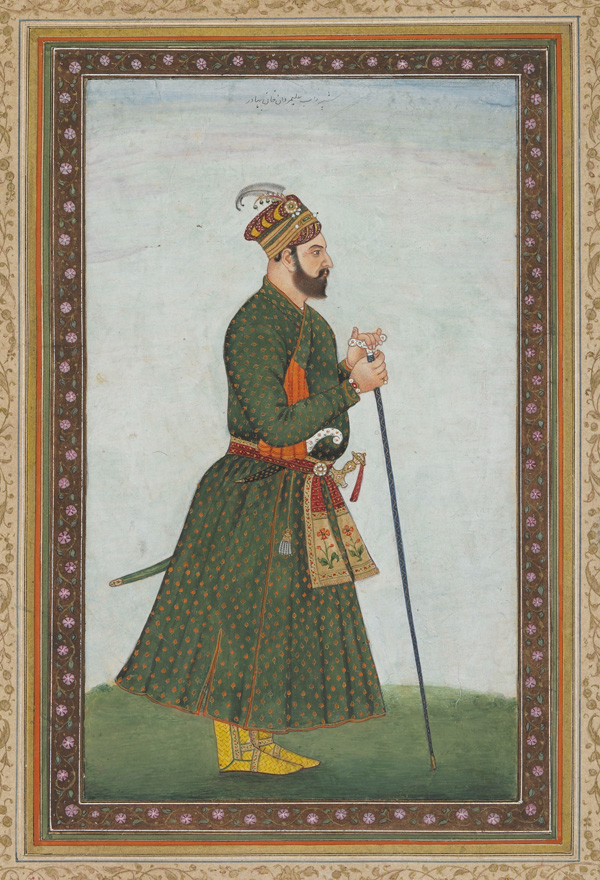|
Mulla Alaul Maulk Tuni
Mulla Alaul Maulk Tuni ( fa, ملا علاءالملک تونی) was an Iranian architect. He was born in Ferdows (named "''Toon''" historically) in the 17th century. He cooperated with Ali Mardan Khan in the construction of the Shalimar Gardens in Lahore in 1641 C.E. He also designed and built the Fazelieh school in Mashhad Mashhad ( fa, مشهد, Mašhad ), also spelled Mashad, is the second-most-populous city in Iran, located in the relatively remote north-east of the country about from Tehran. It serves as the capital of Razavi Khorasan Province and has a po ... from approximately 1650 to 1665. Notes Iranian architects People from Ferdows Year of death unknown Year of birth unknown {{iran-bio-stub ... [...More Info...] [...Related Items...] OR: [Wikipedia] [Google] [Baidu] |
Ferdows
Ferdows ( fa, فردوس, also Romanized as Ferdos, Ferdous, and Firdaus; named Toon or Tūn until 1929) is a city and capital of Ferdows County, located in the north of South Khorasan Province in Iran. It is about south of Mashhad and 200 km northwest of Birjand. Ferdous is located on the main axis connecting Yazd, Kerman, Isfahan, Bushehr, Hormozgan and Fars provinces to Mashhad. Ferdows city is 1293 meters above sea level. Ferdows At the 2011 census, its population was 28,695, in 8,749 families. After the Khorasan province was divided into 3 provinces, Ferdows County was initially a part of Razavi Khorasan province, but was incorporated within the borders of South Khorasan Province in March 2007. History Founded by the Medes, Ferdows is currently a city. It was a large and famous city in ancient days. There is an unproven theory that the town's name in ancient days was "Taban" (or shining; تابان in Persian). In Islamic times it became known as Toon o ... [...More Info...] [...Related Items...] OR: [Wikipedia] [Google] [Baidu] |
Ali Mardan Khan
Ali Mardan Khan ( fa, ; died April 1657) was a Kurdish military leader and administrator, serving under the Safavid kings Shah Abbas I and Shah Safi, and later the Mughal ruler Shah Jahan. He was the son of Ganj Ali Khan. After surrendering the city of Qandahar, part of the easternmost territories of the Safavids to the Mughals in 1638, he served with distinction in the Mughal administration, earning the highest honors of the Mughal court. Career Ali Mardan Khan was a Kurd of the Zig tribe, and son of Safavid official Ganj Ali Khan. In 1624, Ali Mardan Khan inherited his father's position when he was appointed governor of Kerman, Sistan, and Qandahar by the Safavid emperor Shah Abbas. Like his father, Ali Mardan Khan governed from the city of Qandahar. In 1625, control of Kerman was handed over to Tahmasp Qoli Khan for administrative reasons. In 1632, Ali Mardan Khan began a series of correspondences with the Mughal court, culminating in the official surrender of his ... [...More Info...] [...Related Items...] OR: [Wikipedia] [Google] [Baidu] |
Shalimar Gardens (Lahore)
The Shalimar Gardens ( ur, , translit=Shālāmār Bāgh) are a Mughal garden complex located in Lahore, Pakistan. The gardens date from the period when the Mughal Empire was at its artistic and aesthetic zenith, and are now one of Pakistan's most popular tourist destinations. The Shalimar Gardens were laid out as a Persian paradise garden intended to create a representation of an earthly utopia in which humans co-exist in perfect harmony with all elements of nature. Construction of the gardens began in 1641 during the reign of Emperor Shah Jahan, and was completed in 1642. In 1981 the Shalimar Gardens were inscribed as a UNESCO World Heritage Site as they embody Mughal garden design at the apogee of its development. Names The courtiers told the Maharaja Ranjit Singh "that Shala was a Turkic word which means pleasure and the mar means the place to live in". "The arguments of the courtiers in favour of the Turkic signification of the word failing to make any impression on Ranjit ... [...More Info...] [...Related Items...] OR: [Wikipedia] [Google] [Baidu] |
Lahore
Lahore ( ; pnb, ; ur, ) is the second most populous city in Pakistan after Karachi and 26th most populous city in the world, with a population of over 13 million. It is the capital of the province of Punjab where it is the largest city. Lahore is one of Pakistan's major industrial and economic hubs, with an estimated GDP ( PPP) of $84 billion as of 2019. It is the largest city as well as the historic capital and cultural centre of the wider Punjab region,Lahore Cantonment globalsecurity.org and is one of Pakistan's most socially liberal, |
Mashhad
Mashhad ( fa, مشهد, Mašhad ), also spelled Mashad, is the second-most-populous city in Iran, located in the relatively remote north-east of the country about from Tehran. It serves as the capital of Razavi Khorasan Province and has a population of 3,001,184 (2016 census), which includes the areas of Mashhad Taman and Torqabeh. The city has been governed by different ethnic groups over the course of its history. Mashhad was once a major oasis along the ancient Silk Road connecting with Merv to the east. It enjoyed relative prosperity in the Mongol period. The city is named after the shrine of Imam Reza, the eighth Shia Imam, who was buried in a village in Khorasan which afterward gained the name, meaning the "place of martyrdom". Every year, millions of pilgrims visit the Imam Reza shrine. The Abbasid caliph Harun al-Rashid is also buried within the same shrine. Mashhad is also known colloquially as the city of Ferdowsi, after the Iranian poet who composed the ''S ... [...More Info...] [...Related Items...] OR: [Wikipedia] [Google] [Baidu] |
Iranian Architects
Traditionally, Iranian architects were known as ''Mi'mars''. The Persian dictionary of ''Mo'in'' defines Mi'mar as: #That who devises the design and plan of a building, and overlooks its construction. #A Banna #That who is responsible for the building, developing, and repairs of a structure or edifice (Emārat). Classical words ''Banna'', ''Mohandes'', ''Ostad'', and ''Amal'' which appear in classical manuals and references of Islamic architecture. Although many scholars do not recognize the Mimar and the Architect to historically be the same, they do agree that their responsibilities overlap extensively. In this list, they are taken to be the same. The list is in chronological order and selectively spans the Islamic age based on available records. There is little, if any, record of the numerous masters of architecture that built some of the early Islamic and pre-Islamic world's wonders of Iran. It is unknown who built the palaces of Bishapur, Firouzabad, Persepolis, Susa, ... [...More Info...] [...Related Items...] OR: [Wikipedia] [Google] [Baidu] |
People From Ferdows
A person ( : people) is a being that has certain capacities or attributes such as reason, morality, consciousness or self-consciousness, and being a part of a culturally established form of social relations such as kinship, ownership of property, or legal responsibility. The defining features of personhood and, consequently, what makes a person count as a person, differ widely among cultures and contexts. In addition to the question of personhood, of what makes a being count as a person to begin with, there are further questions about personal identity and self: both about what makes any particular person that particular person instead of another, and about what makes a person at one time the same person as they were or will be at another time despite any intervening changes. The plural form "people" is often used to refer to an entire nation or ethnic group (as in "a people"), and this was the original meaning of the word; it subsequently acquired its use as a plural form of p ... [...More Info...] [...Related Items...] OR: [Wikipedia] [Google] [Baidu] |
Year Of Death Unknown
A year or annus is the orbital period of a planetary body, for example, the Earth, moving in its orbit around the Sun. Due to the Earth's axial tilt, the course of a year sees the passing of the seasons, marked by change in weather, the hours of daylight, and, consequently, vegetation and soil fertility. In temperate and subpolar regions around the planet, four seasons are generally recognized: spring, summer, autumn and winter. In tropical and subtropical regions, several geographical sectors do not present defined seasons; but in the seasonal tropics, the annual wet and dry seasons are recognized and tracked. A calendar year is an approximation of the number of days of the Earth's orbital period, as counted in a given calendar. The Gregorian calendar, or modern calendar, presents its calendar year to be either a common year of 365 days or a leap year of 366 days, as do the Julian calendars. For the Gregorian calendar, the average length of the calendar year ... [...More Info...] [...Related Items...] OR: [Wikipedia] [Google] [Baidu] |





_1938.jpg)
